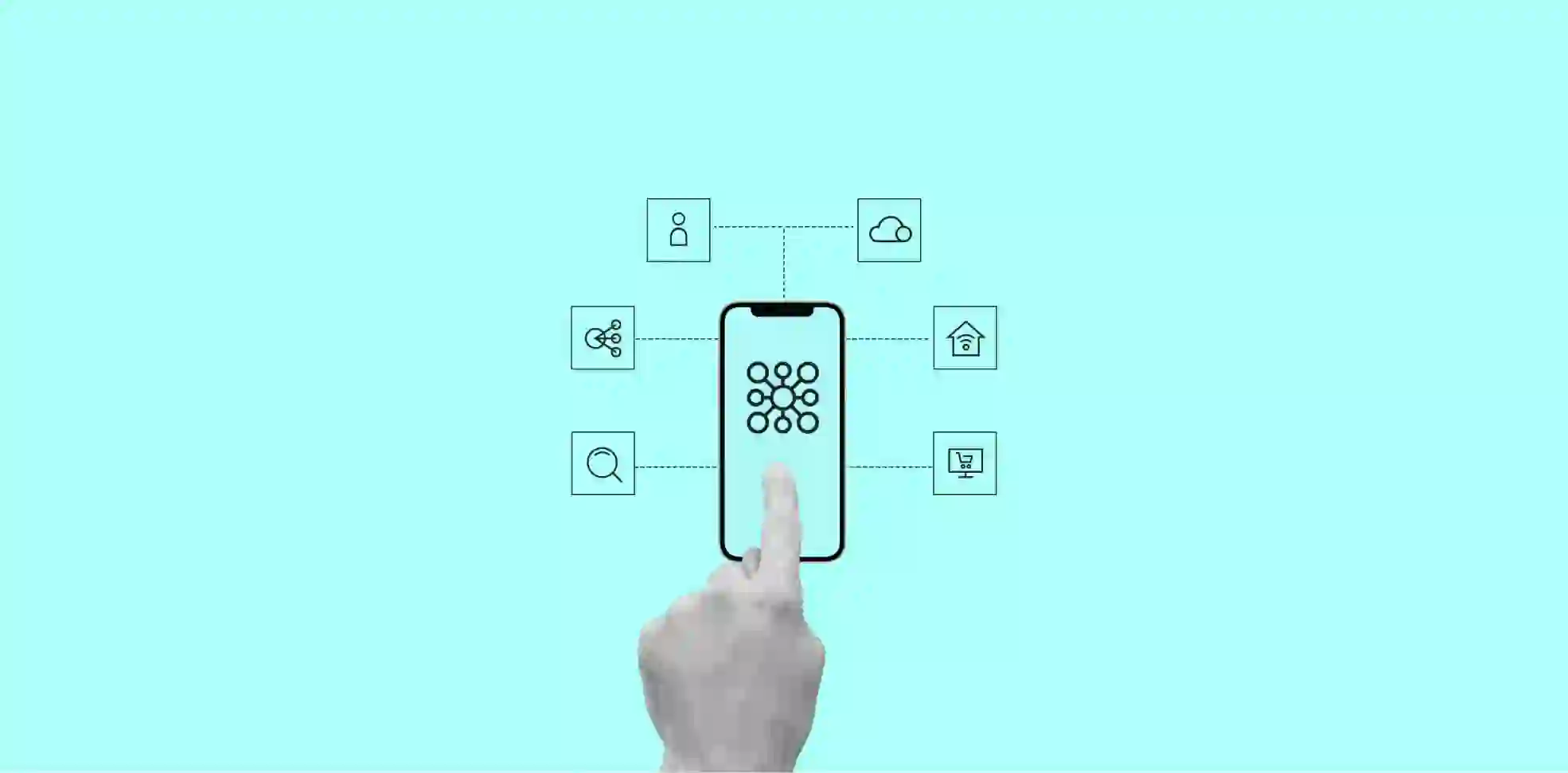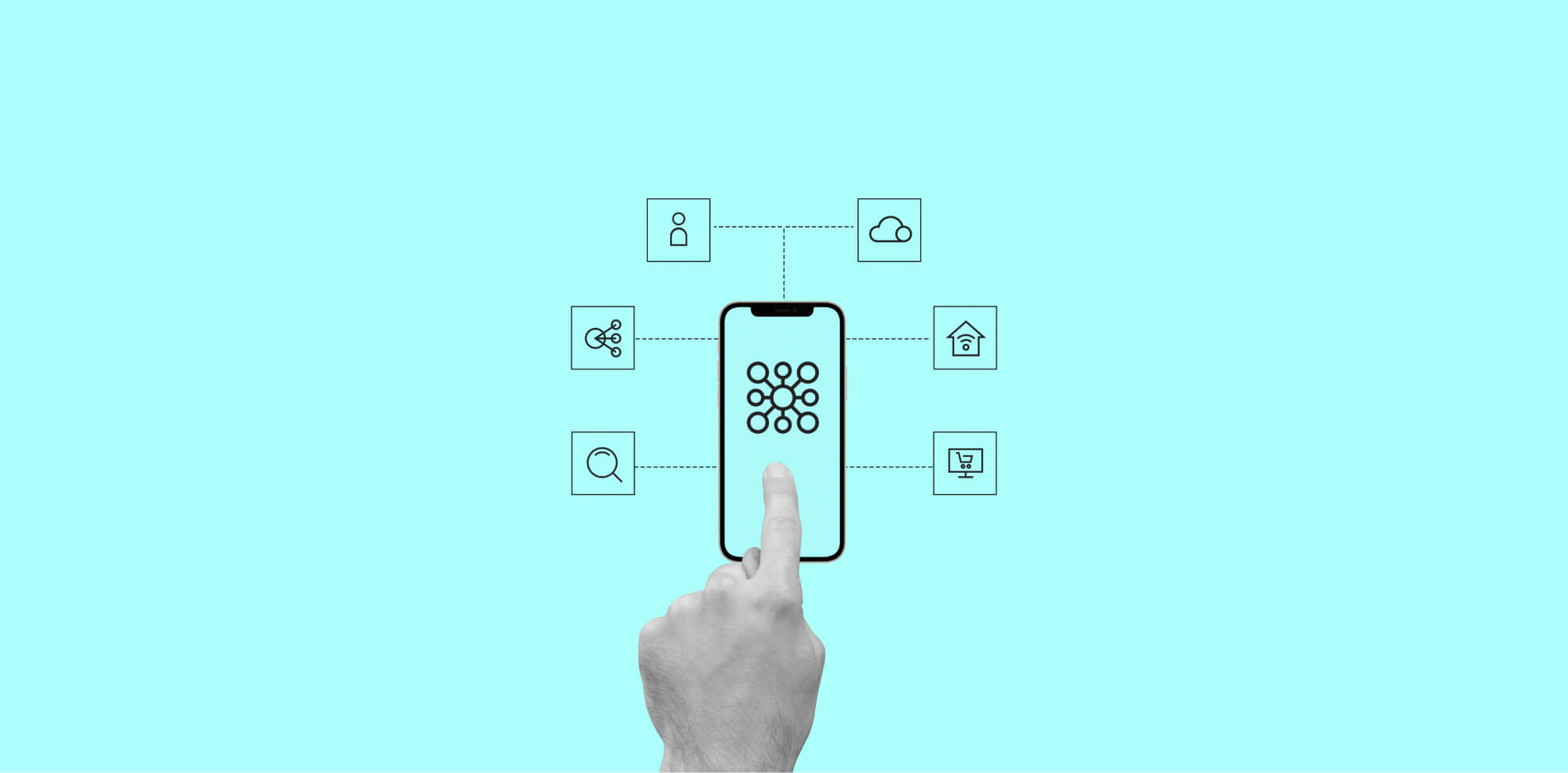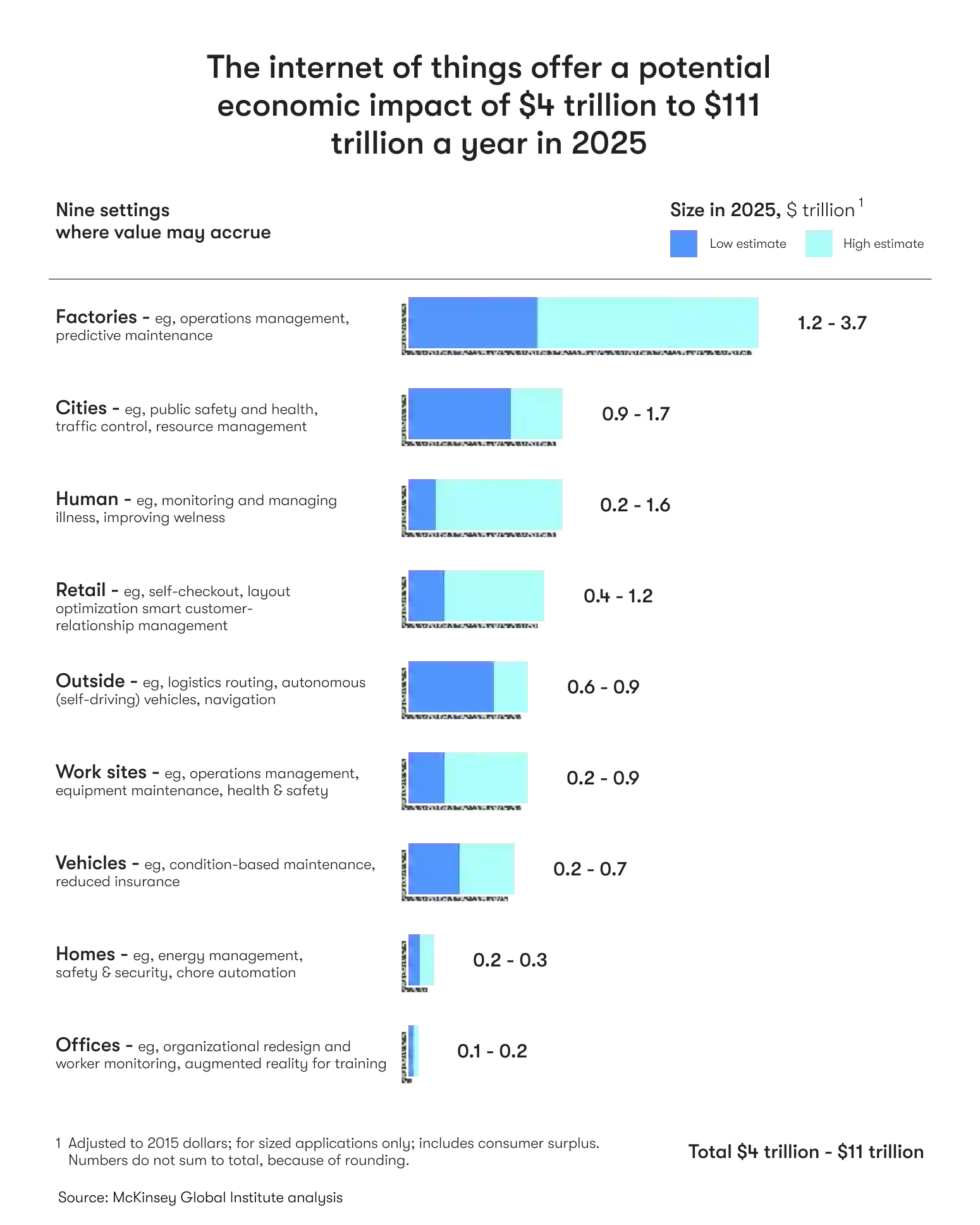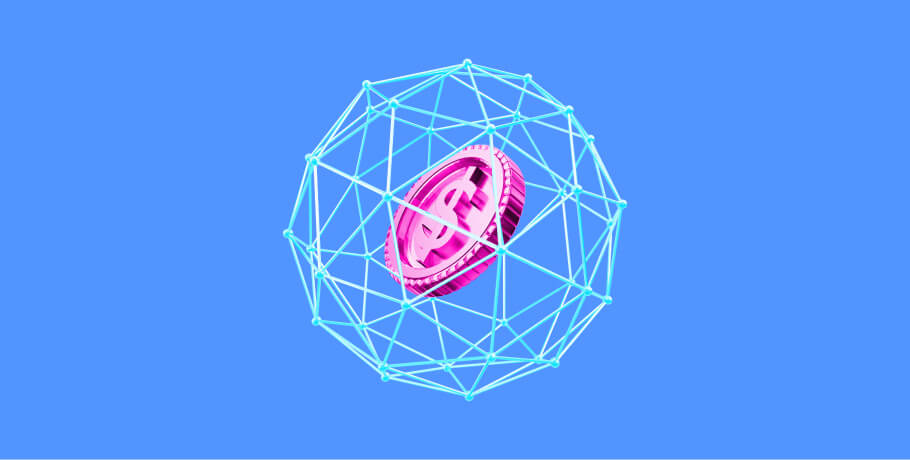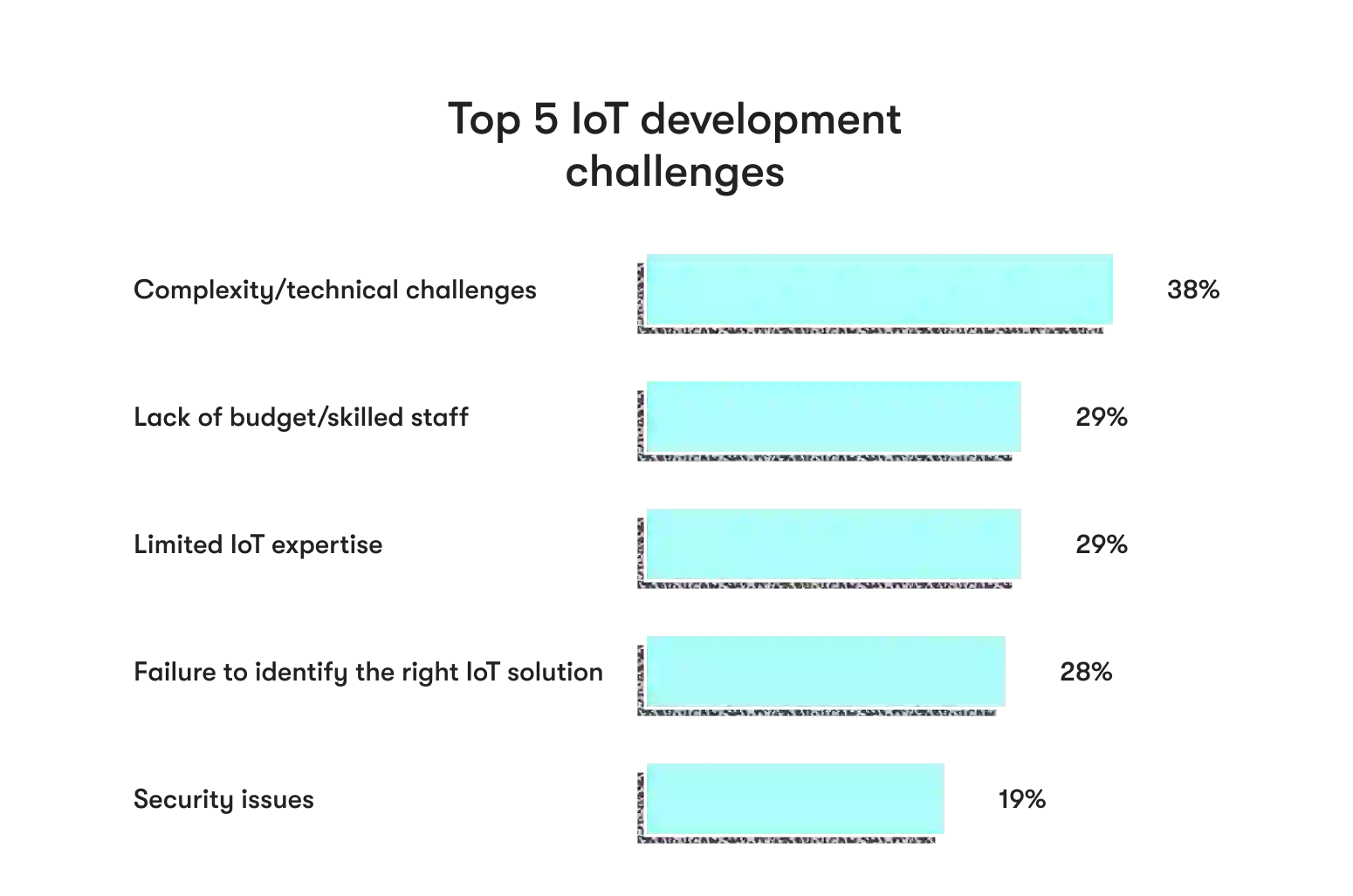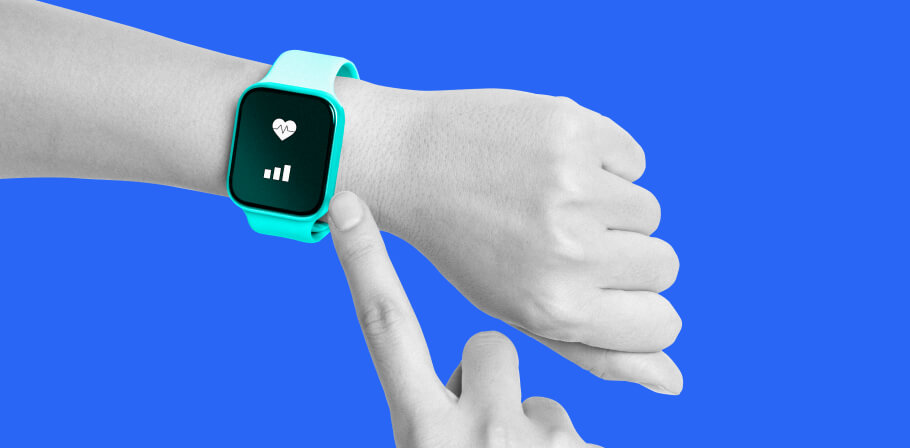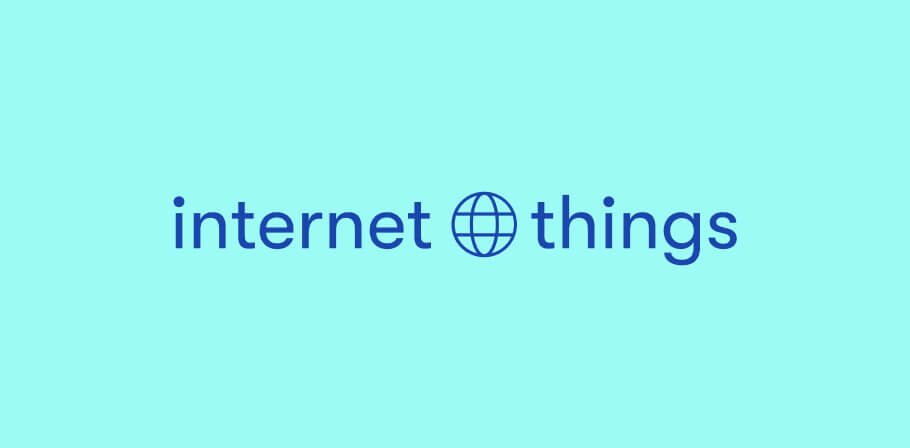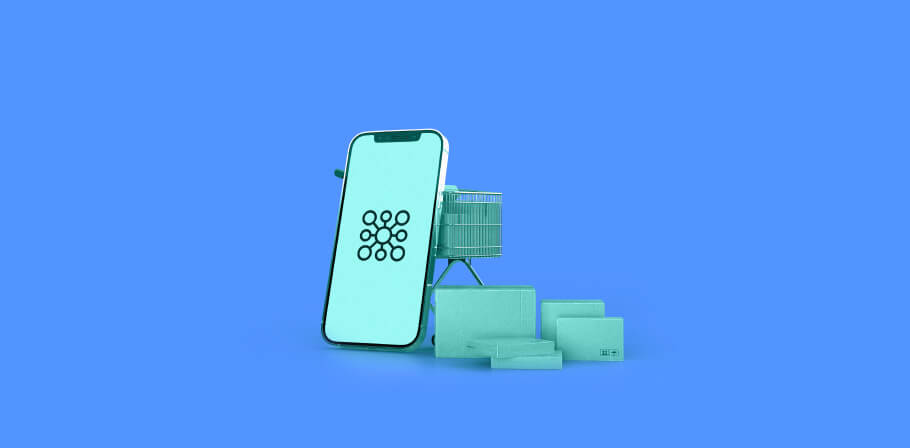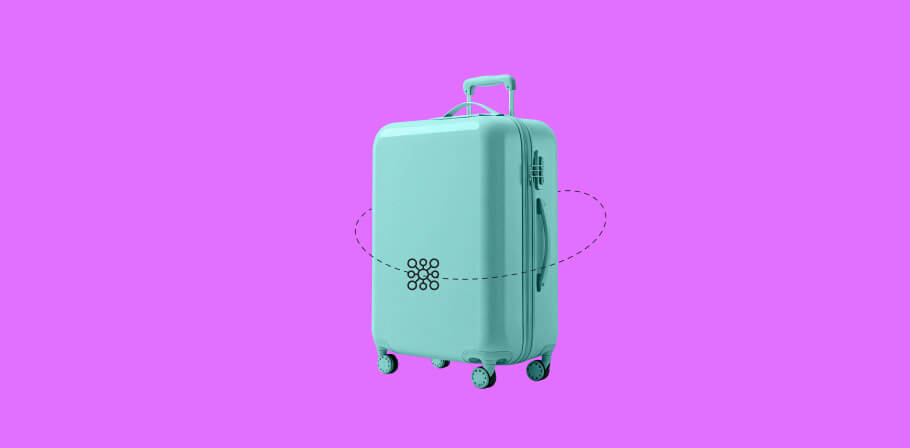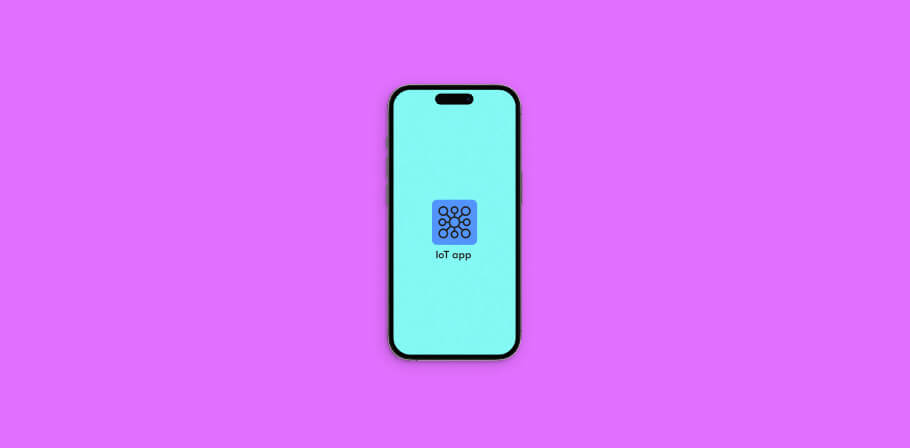The growing widespread application of the internet of things (IoT) led to the generation of vast amounts of data that needs to be properly stored and analyzed. Do you know how much your company can save with IoT and big data technologies? In a study by DHL, they predicted that the implementation of IoT would cut their costs by $1.2 trillion. Big data analytics and IoT work together to provide valuable information and optimize a number of industries. In this article, we will touch on the relationship between IoT and Big Data, the benefits they can bring to your business, the challenges they pose, and use cases that describe their applications and development costs.
Relationship between Big Data and IoT to Assist Your Business Growth
How do IoT and Big Data correlate, and what can their symbiosis deliver? In this section, we will focus on the relationship that the technologies have and discuss the main differences between IoT and Big Data.
Role of Big Data in IoT in the Digital Excellence
What is big data in IoT? The use of IoT devices involves dealing with enormous volumes of information and interpreting it in real-time to make meaningful insights. For example, patients wear IoT-enabled bracelets that capture their heart rate, pulse, glucose level, and more, and send the information to their physicians. Having access to real-time patient health metrics allows doctors to monitor the vital signs and adjust the treatment plan whenever it is required. Data can also be used for further research and drug studies. Big data is a huge part of the process as it provides platforms and techniques to analyze information, recognize patterns, build algorithms and draw conclusions.
How do IoT and Big Data Interact?
How is big data and the internet of things connected? They help each other accelerate and evolve. Big data analytics needs to be implemented when IoT devices are deployed as they produce large amounts of information. This relationship allows big data to grow and become more sophisticated and useful. At the same time, big data technology is a tool that fuels the internet of things and helps it expand.
Difference Between Big Data vs. IoT
When it comes to IoT vs big data, the difference is quite vast and distinct. The internet of things is a set of devices, wearables, and machines that are interconnected. They communicate with each other in real-time and exchange information. The devices can include complex machines as well as common household objects, depending on the industry and purpose.
Big data is a complex concept that can be explained using its three main aspects: volume, velocity, and variety. First of all, big data is voluminous, as it mostly deals with large amounts of information. Additionally, data is produced fast and frequently, which is another feature of big data. Finally, big data is diverse and involves dealing with different types of information.
WONDERING HOW TO IMPLEMENT AND PROFIT FROM IOT AND BIG DATA?
EPAM Startups & SMBs comprises teams of seasoned technical specialists who can help you make this move. We will find you the best data engineers to build your project and take your business to a new level.
How are IoT and Big Data Together Beneficial for Companies?
According to the report by McKinsey, by 2025, IoT technology will provide an economic impact of $3.9 to $11.1 billion. How exactly will big data and IoT disrupt industries across the globe? How does IoT contribute to big data? In this part, we will dive into the biggest benefits that these technologies can bring to your businesses.
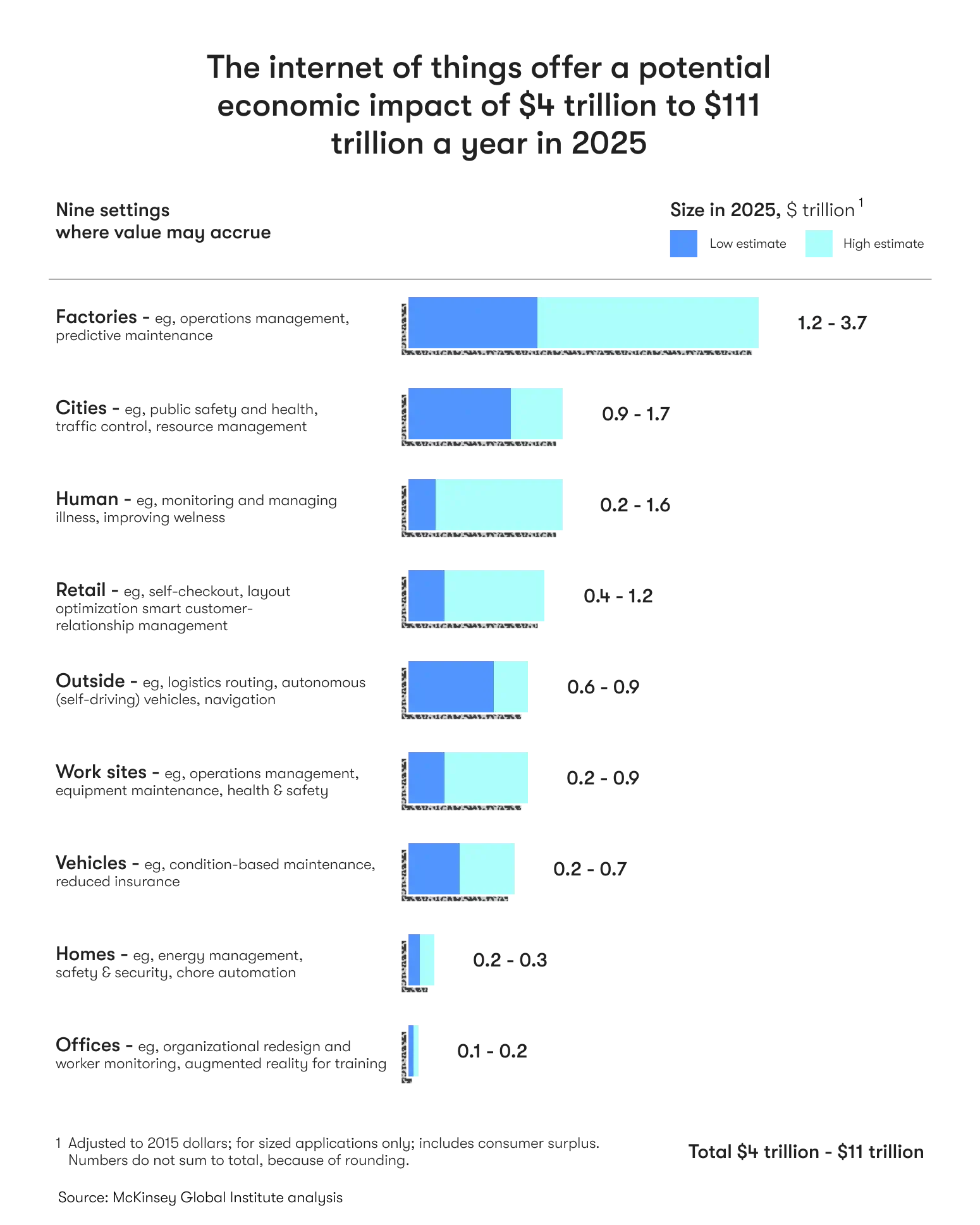
Improved Decision-Making
Decision-making processes based on real-time tangible info are a lot more effective and precise. For instance, IoT sensors can be installed at stores to monitor the volume of certain items that have been interacted with, moved, touched, and sold. These insights allow marketers and salespeople to evaluate the success of marketing campaigns. If they notice a drastic drop in sales, they can immediately react and figure out what went wrong before losing too much money. Sometimes it could be as trivial as the store owner forgetting to put new products on the shelf.
Supply Chain Optimization
Supply chain management is a complex, multi-step process that requires a lot of people and technologies to perform smoothly. It oversees the entire journey of a commodity, from procurement of raw materials to the distribution of a final product. The COVID outbreak posed a huge burden on the supply chain management and led to slowdowns and even complete interruption of the flow of raw materials and end products. Moreover, the current Russian-Ukrainian conflict poses a large threat to the manufacturing and distribution of certain goods like sunflower oil. Under these circumstances, companies do not stand a chance without going through digitization.
The process needs implementation of the IoT technology to control the product’s flow and make the steps more visible to the management. By connecting people, information, and processes, IoT devices offer a consolidated network where live intel is collected, measured and exchanged. This can be then transferred to dashboards to add visualization and help supply chain managers have access to real-time data and make proactive and data-driven decisions.
Risk Monitoring and Prediction
Risk assessment and management is a highly complicated and intricate topic that many businesses struggle with. Considering every single potential risk, assessing its probability, severity and outcomes is a difficult task that requires a lot of industry experience. By integrating IoT sensors into internal systems, businesses can passively monitor the situation and react whenever they see a posing risk. This can also save companies valuable resources and expenses as it would allow them to mitigate or eliminate the risk before a disaster occurs. For example, manufacturers can install IoT sensors into warning systems that measure the levels of harmful fumes and alert managers in charge when the amounts exceed the normal levels.
Trends Prediction
Another benefit of merging big data analytics and the internet of things is the ability to increase predictability which is one of the most important components of a company’s success. Attaching sensors to a piece of machinery equipment and monitoring its performance, speed, temperature and other relevant measurements can help technicians to assess their condition. Learning that a piece of equipment is faulty or broken before it actually stops working allows technicians to make repairs or replace it in time before losing valuable manufacturing time.
Increase ROI
IoT and big data analytics help organizations extract lots of info, and capture and analyze it to build tangible insights. This leads to better decision-making, increased efficiency, better customer retention, and lower operational costs. Information is the cornerstone of every business decision made in a modern-day office, which is why having access to it and knowing how to utilize this information in a meaningful way will have a considerable effect on the company’s finances, including higher ROI.
Enhanced Customer Understanding
Understanding your customer behavior, habits and needs is the key to a successful business. Retailers can also benefit from IoT technology at the stores as they can capture customer movements and identify which areas of the store tend to underperform. Using this intel, store owners can reorganize their shelves, change the design, or add signs that display ads for the items in a remote part of the store.
Challenges in IoT with Big Data Analytics
The adoption of big IoT data analytics does not come without its challenges and risks that need to be taken into consideration. Although mitigable, these risks can burden your organization and increase short-term expenses. Let’s discuss the main challenges that you might expect when implementing these technologies into your business.
Data security
Every physical object that is connected to the internet is potentially vulnerable to cybersecurity attacks. As the goal of the internet of things is to connect various devices to the internet and extract data from them, the probability of data exposure goes up. IoT big data is a relatively new technology for security experts to protect, creating a talent gap. However, cybersecurity is always one of the largest concerns and will be greatly prioritized in the future of technology.
Real-Time Data
In the next three years, we will notice a shift towards real data, with 30% of all data becoming real-time by 2025. IoT will be responsible for 95% of real-time data which is why investing in this technology requires also developing sophisticated and robust data analytics systems. As of now, most traditional data analytics tools are not capable of handling the complexity, variety, and volumes of IoT-generated big data. Organizations have to update their technical possibilities to enable streaming analytics and edge analytics.
Remote Monitoring
While opening doors to additional analytical possibilities, widespread remote monitoring can have a detrimental effect. An IoT device can be infected with malware that will extend to connected devices and disrupt the company's services. The recent attack reached companies like GitHub and AWS, which means that no one can be fully immune.
Data Management and Storage
With the revolution of IoT, more and more data will be generated every day. In 2022, we collectively produced 2.5 quintillions (ten to the power of 18) bytes of data on a daily basis, and this number will only grow. Nonetheless, the capacity of the majority of modern data storage systems and warehouses is limited, which poses a challenge to storing and handling growing amounts of data. In the future, we will need to develop new mechanisms and systems that collect and store increasing volumes of info.
Data Visualization
In order to present data understandably, data scientists utilize data visualization techniques. However, with vast amounts of real-time data of different formats and kinds, both structured and unstructured, visualization becomes more difficult to perform. Especially with the growing need for real-time data, taking too much time to efficiently visualize defeats the purpose. The future of data will require new visualization capabilities that will help people achieve their business goals.
Data Reliability
A moderate margin of error is always included in IoT and big data analysis, but businesses still need to make sure that sensors are placed properly and capture the info they are supposed to. Multiple factors can jeopardize the accuracy of collected data, such as weather conditions, malfunctions, wrong settings and more. Before putting time into analyzing data, its sources need to be verified and checked for reliability.
WANT TO LEARN HOW TO LEVERAGE BIG DATA AND IOT TECHNOLOGIES WHILE AVOIDING ROADBLOCKS?
Invest in these technologies to take advantage of real-time insights and optimize your business processes. Save costs and improve user experience by building your own IoT project with EPAM Startups & SMBs.
Use Cases of Big Data Analytics and Internet of Things
The application of the internet of things and big data analytics are far-reaching and can be beneficial across multiple industries. In this section, we will go through a few areas where these technologies can make a big difference.
Banking and Insurance
Fraud detection: Using big data and creating algorithms that recognize customer patterns allows the fintech industry to instantly detect fraudulent behavior and alert the user and stop the transaction. Technology can also make fraud detection more precise and not block customer accounts for no reason, increasing user satisfaction.
Service improvement: Big data analytics allows businesses to optimize the user experience and eliminate unnecessary hurdles in their interaction with the system. Behavioral patterns can highlight at which stage users mostly experience issues and work on their design, navigation, and features to accommodate that.
Algorithmic trading: Trading is an immensely intricate process that involves numerous factors. The ability to process information faster will give companies a competitive advantage. Big data can assist businesses in making smart decisions based on real-time data, which will significantly improve the chances of successful trading.
Risk management: Fintech companies can utilize big data IoT applications to evaluate customers’ credit scores before granting them a loan for a venture or house. Using algorithms, they can predict the likelihood of the person paying their debts and bringing money into their bank.
Healthcare & Telemedicine
Electronic Health Records (EHRs) implementation: The adoption of EHRs provides physicians with more patient information and grants easier access to medical records. The ability to share patient data between medical institutions reduces duplicate tests and improves the chances for accurate diagnoses. Big data mechanisms can deliver EHRs across hospitals and clinics and increase patient experience.
Evidence-based medicine: The ability to capture and store large amounts of patient data helps clinicians to have a broader base of cases and associated symptoms. Whenever they treat a new patient, they can compare their symptoms to the database and look for correlations. As a result, patients can be treated faster and more effectively, which also saves the hospital money and time.
Remote patient monitoring: IoT big data applications can also facilitate better access to healthcare for people from remote areas, as well as patients with disabilities. Instead of taking a trip to the hospital, they can take advantage of IoT devices that monitor their vital signs and transfer this data to their physician. Whenever measurements go above or below the normal levels, the doctor can adjust the treatment plan accordingly.
Inventory tracking: Hospitals are mostly large organizations with many staff members, patients, and visitors. Tracking the movements of all of them as well as making sure the inventory is sufficient is not an easy undertaking, and hospitals are commonly understaffed as it is. IoT sensors allow managers to monitor people and inventory movement across the premises and make sure there is always enough medication.
Education
Creating new methodologies: E-books, smart boards, voice command systems, and smartphones with educational apps are all changing the way schools offer their services. They are becoming more inclusive and accessible and provide a personalized experience that plays an important role in a child’s learning experience.
Safety on school property: When minors are involved, safety becomes imperative, and IoT sensors in disaster alarms, door locks, and security cameras can help increase it. They can be more precise at detecting the exact location of the problem, such as fire, break-in, abuse, etc., and alert the school staff and police.
Distance learning: The current pandemic has shown the necessity of distance learning, advancing the online education field. Even outside the pandemic, many people across the globe do not have access to traditional education, and distance learning bridges this gap and makes it more accessible. IoT sensors can capture the level of brain activity during the lessons and notify the software, tweaking the course and making it more engaging.
Enhanced interaction: Lessons that involve elements of gamification and video material tend to be more interactive and keep the students engaged. Big data can also give people access to various materials, which allows them to revise it at their own pace.
Retail and Wholesale
Personalizing the in-store experience: Using the internet of things and big data applications, retailers can evaluate marketing campaigns, personalize user experience, increase sales revenue, and more. Based on the customer’s movements inside the store, they can drive timely offers and incentivize a purchase.
Predictive analytics and targeted promotions: Nowadays, retailers have access to more data than simply customer demographics. Using big data mechanisms, they can evaluate what people search for or shop online and target their promotions specifically to encourage the customer to make a purchase.
Facility management: By placing IoT systems in changing rooms, retailers can optimize the cleaning schedule and increase efficiency. The sensors can also capture inventory and alert managers whenever something runs low or is misplaced inside the store.
Smart shelves: Such shelves are equipped with sensors that monitor the number of items as well as their placement, which helps workers keep track. Moreover, they also help detect potential theft or damage to the items.
Communications, Media, and Entertainment
Predicting audience interest: Big data provides valuable insights into what users search, watch, read, listen to, like, and leave reviews on. Based on this information, companies can personalize user experience and make the suggestions that the customer is likely to take.
Increasing audience acquisition and reducing churn: The costs of user acquisition are notoriously high, and utilizing big data to gain new subscribers or viewers can be beneficial to media businesses. Learning what people like and engage with can also help reduce churn.
Improving ad targeting: The collection of customer data from various sources allows media platforms and brands to target their ads more precisely. The costs of ad placement are quite high and fine-tuning the reach to a smaller group of people that are more likely to make a purchase is a lucrative endeavor.
Multi-device content delivery: Media companies can expand their brand to smart TVs, game consoles, VR systems, and more to provide a multi-device content experience. This increases user engagement as well as allows companies to generate more user data to utilize in the future.
NOT SURE IF YOUR COMPANY CAN ALSO BENEFIT FROM BIG DATA AND IOT?
Our data experts will evaluate your business and discover the opportunities to take advantage of these technologies. Data will provide you with valuable insights that you cannot refuse.
The Future of IoT and Big Data in Business Value
According to Research and Markets, the global market for IoT big data solutions will reach almost $51 billion by 2026. The technology will continue to grow and require robust and agile systems, advanced analytical tools, and scalable data storage. Real-time data will be the focal point of IoT data and allow businesses to collect streaming data and make decisions in near real-time. The powering forces for the market will be the fintech, telecom, retail, healthcare, and transportation industries.
Do IoT and Big Data suit SMBs and Startups?
Medium and small businesses can definitely benefit from the adoption of IoT big data processing. These technologies can increase the transparency and predictability of the business by providing more insights into internal and external factors. For example, you can learn when people are most likely to visit your store and schedule the staff according to this information. Using predictive algorithms, businesses can forecast market trends as well as customer behavior.
IoT-enabled devices can also optimize your logistics and streamline inventory management. Vehicle tracking helps companies to ensure compliance, monitor driver safety, limit emissions, and verify quality. The technology can also reduce operational expenses and cost of customer acquisition, eliminate product shrinkage and increase sales revenue. Investment in big data and IoT software development services are quite significant, which we will discuss in more detail in this part.
How much Do IoT and Big Data Cost on Average?
The costs of IoT and big data development services vary depending on the complexity, vendor location, number of features, and other factors. For example, an intelligent indoor navigation system for an exhibition center can cost from $40,000 to $60,000 and lasts about 900 hours from design and development to release. The system tracks the user location using a mobile app and helps visitors find their way throughout the building and get alerts about the exhibition participants.
As you can see, the investment is significant and needs to be carefully considered. About three out of four IoT projects go unfinished for various reasons like lack of funding, high level of complexity, security issues, and lack of skilled staff. All things considered, make sure you have professionals on board that can pull this project off and be mindful of your investment.
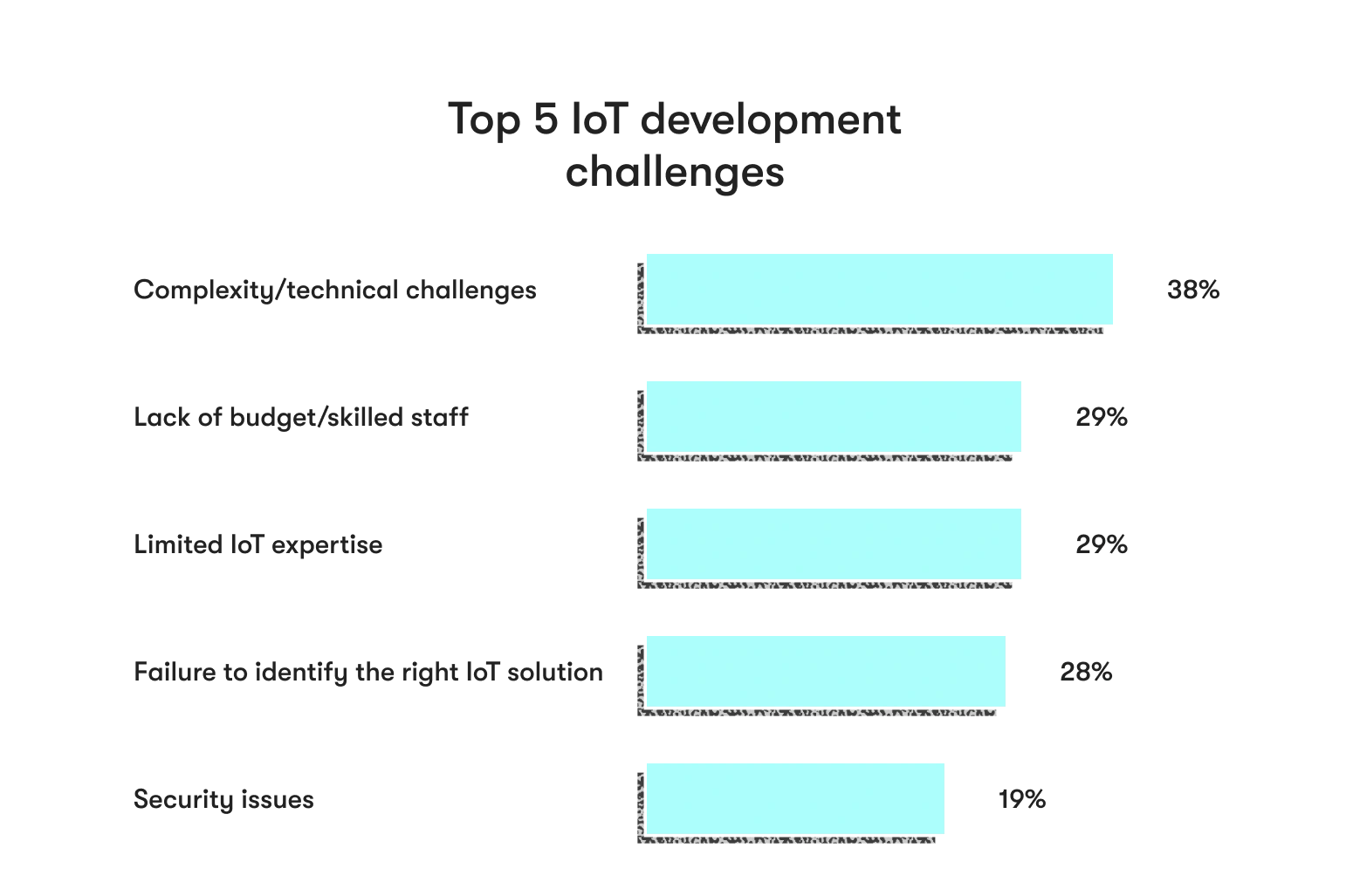
CONTEMPLATING THE ADOPTION OF IOT, BUT COSTS SEEM TOO HIGH?
EPAM Startups & SMBs is a business collaboration platform that will offer hands-on collaboration and consultation on how to avoid roadblocks and minimize costs.
How do IoT and Big Data generate profits?
Research from Capgemini shows that 27% of business executives share that their investments in big data were profitable, while 45% broke even. As 54% of companies claim, the main source of revenue that IoT projects generate is cost savings. Netflix saves $1 billion each year due to the implementation of its recommendation algorithms that are driven by big data. Basically, the way you will be able to generate profit from creating an IoT application and leveraging big data is by avoiding overspending, optimizing business processes, targeting your ads and promotions and more. In other words, the key monetization model here is to reduce costs and potential monetary losses.
EPAM's Experience in Using IoT and Big Data
EPAM created the EPAM Startups & SMBs platform that helps collaborate with startup and SMBs clients to help them build enterprise-quality products. Take a look at EPAM’s successful IoT big data cases:
- Telefónica Germany
The company reached out to EPAM to move towards big data in pursuit of creating more personalized offers to their clients and utilizing investments more efficiently. The developed solution allows Telefonica Germany to process vast amounts of unstructured data at a competitive speed.
Results: The solutions accelerate data processing 10 times faster than previous products.
- Epic Games Fortnite
Epic Games partnered up with EPAM to create one of the most successful games in recent years, Fortnite. The enormous ever-growing user base requires a powerful analytics system built for the purpose. EPAM extended Epic Games’ data engineering team and built a system that processes billions of playing hours, which helps developers make data-driven decisions about future improvements.
Results: EPAM built a secure scalable gaming platform that has reached 350+ million players.
- Edmunds Minsk Hackathon 2015
Edmunds is a car dealing destination for buyers, dealers, and researchers across the US. During the hackathon, EPAM's engineers developed three solutions. The first app showcased price graphs based on real-time data to allow visitors to come in and make a purchase when the price goes down. Another solution enabled clients to compare Edmunds to other dealers in the area. The final product was an addition to the Edmunds account page where users could share their own cars for sale. Dealer’s price and maintenance offers were automatically generated based on market prices.
Conclusion
The market potential of the internet of things and big data is apparent. Even though the initial investment can be quite steep, the long-term cost savings will more than account for it. IoT and big data provide irreplaceable insights into your internal processes, marketing activities, supply chain management as well as external factors that occur on the market. With companies like Netflix saving $1 billion per year using big data, you cannot refuse this level of cost efficiency. Furthermore, in our day and age, investing in big data technology is not about creating a competitive edge, but about staying afloat and surviving on the market. If you are still on the fence about starting a big data and IoT project, get in touch with EPAM Startups & SMBs to discuss your needs.
FAQ

Expert digital communicator and editor providing insights and research-based guides for technology buyers globally.
Expert digital communicator and editor providing insights and research-based guides for technology buyers globally.
Explore our Editorial Policy to learn more about our standards for content creation.
read more